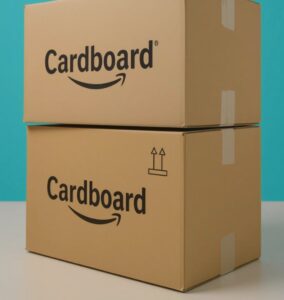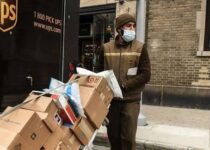Cardboard Recycling Near Me | Tips
When people search for “cardboard recycling near me,” they’re usually not just looking for a bin — they’re looking for a simple, responsible way to deal with the constant stream of boxes that modern life creates.
Every delivery, appliance purchase, or office supply shipment adds to a growing pile of sturdy, brown cardboard.
Instead of treating it as trash, local recycling turns that pile into raw material for new products, saving energy, trees, and landfill space.
What makes nearby recycling services valuable isn’t just convenience — it’s their role in a closed-loop system.
By taking your boxes to a local center (or scheduling a pickup), the material can be broken down, pulped, and reformed into fresh cardboard within weeks.
This keeps production local, reduces transportation emissions, and strengthens community recycling infrastructure.
“Near me” isn’t just about distance; it’s about connection to a local circular economy.
Your single flattened box becomes part of a much larger, ongoing cycle — one that starts and ends in your own community.
Free Cardboard Recycling Near Me
Cardboard is one of the few materials that’s both valuable and easy to recycle, which is why many cities, recycling centers, and even businesses offer free recycling options.
Instead of paying disposal fees or letting boxes pile up, you can drop them off or schedule a pickup at no charge.
The reason it’s often free is simple: recycled cardboard has real market value. Once collected, it’s pulped, processed, and turned into new packaging or paper products.
This reduces manufacturing costs for producers, cuts down on landfill waste, and saves trees — all without costing you a cent.
Depending on where you live, free recycling may be available through:
- Curbside recycling programs (just break down the boxes and leave them out)
- Local drop-off centers or transfer stations
- Retail stores or warehouses that accept clean cardboard
- Community recycling events or municipal services
Free cardboard recycling isn’t just a cost saver — it’s a way to support a sustainable loop where waste becomes raw material again.
- Why Recycle Cardboard?
Cardboard might look simple — just layers of brown paper — but it’s actually one of the most valuable and recyclable packaging materials in use today.
Every box you recycle plays a role in reducing waste, saving resources, and keeping local recycling systems strong.
1. It Conserves Natural Resources
- Cardboard is made primarily from wood pulp. Recycling it means fewer trees need to be cut down, and less energy is used to create new packaging from scratch. In fact, recycling one ton of cardboard can save over 15 trees and thousands of gallons of water.
2. It Reduces Landfill Waste
- Cardboard breaks down naturally, but in landfills it releases methane — a powerful greenhouse gas. By recycling, you keep bulky boxes out of landfills and help cut harmful emissions.
3. It Saves Energy and Cuts Emissions
- Producing cardboard from recycled fiber uses far less energy than manufacturing it from raw wood. That means lower carbon emissions and less strain on the environment.
4. It Supports a Circular Economy
- When you recycle cardboard, it doesn’t just disappear — it’s turned into new boxes, paperboard, or packaging within weeks. That creates jobs, reduces demand for raw materials, and keeps resources in use longer.
5. It’s Easy and Accessible
- Unlike many materials, cardboard is widely accepted in most curbside and drop-off programs. It can be recycled multiple times, making it one of the simplest ways for individuals and businesses to make a real impact.
Where You Can Find Cardboard Recycling?
Finding a place to recycle cardboard doesn’t have to be complicated — in fact, most communities already have free and accessible options nearby.
People Also Read On:
- Where Can I Recycle Electronics Near Me
- Can You Recycle Pizza Boxes With Grease Or Not?
- Do Drink Cans Go In Recycling Or Trash?
- Is Polystyrene Recyclable? All You Should Know
Whether you’re cleaning out your garage, managing a business, or just want to get rid of shipping boxes responsibly, here are the most common places to look:
1. Curbside Recycling Programs
- Many cities and towns include cardboard in their regular curbside collection. All you need to do is flatten the boxes, remove tape or plastic, and place them in the recycling bin on pickup day.
2. Local Recycling Centers or Transfer Stations
- Municipal recycling centers usually accept clean cardboard for free. These facilities are a great option if you have a large volume of boxes or if curbside service isn’t available in your area.
3. Retail Stores and Warehouses
- Big-box retailers, grocery chains, and shipping stores often recycle cardboard daily. Some locations allow customers to drop off clean boxes, especially if they have extra capacity.
4. Community Drop-Off Points
- Parks, schools, or community centers may host recycling bins or events. These are perfect for residents who want a quick and easy drop-off option without going far.
5. Private Hauling or Pickup Services
- Some recycling companies offer free or low-cost pickup for cardboard, especially for businesses. This is useful if you produce large amounts regularly.
How To Locate Cardboard Recycling Near Me?

Recycling cardboard is simple — the hardest part is just finding the right place. Luckily, with a few quick steps, you can locate a nearby recycling site in minutes.
1. 🌐 Use Online Recycling Locators
- Websites and apps like Earth911, Recycling Finder, or your local government’s waste management site allow you to type in your ZIP code and instantly see the nearest cardboard recycling locations. Many even give directions, hours, and accepted materials.
2. 🏡 Check Your City or County’s Official Website
- Most municipalities list curbside pickup schedules and drop-off center addresses online. This is one of the most accurate ways to find reliable and free recycling services.
3. 🏪 Ask Local Retailers or Shipping Stores
- Large retail chains, hardware stores, and shipping centers often accept clean cardboard or can tell you where they send their recycling. A quick phone call can save you a trip.
4. 📱 Use Map Apps (Google Maps, Apple Maps, Waze)
Search terms like:
- “cardboard recycling near me”
- “recycling center”
- “waste drop-off”
- “cardboard disposal”
These often show verified locations with reviews, hours, and directions.
5. 📨 Contact Private Haulers or Junk Removal Services
- If you have a large quantity of cardboard (e.g., from moving or business deliveries), private recycling companies may offer free pickup or bulk drop-off services.
6. 🗣️ Check Community Boards & Social Media
- Local Facebook groups, neighborhood forums (like Nextdoor), or community centers often share hidden or lesser-known drop-off points that don’t always appear online..
What Makes Cardboard Recycling Unique?
Cardboard is a recycling superstar because its fibers are robust yet versatile, capable of being reborn into new boxes, paper products, or even insulation.
Unlike plastics, which often face downcycling limitations, cardboard retains much of its utility through multiple recycling loops—though not infinitely, as fibers shorten each cycle.
What’s rarely mentioned is the behind-the-scenes complexity: recycling facilities (MRFs) use advanced sorting tech like optical scanners and air jets to separate cardboard from other materials, but local programs dictate what’s accepted and how it’s processed.
For instance, some areas allow waxed cardboard (like produce boxes), while others reject it due to processing constraints.
What Are The Facts About Cardboard Recycling?
1. Cardboard Is One of the Most Recycled Materials in the World
- Cardboard (also called corrugated fiberboard) makes up a large share of household and commercial packaging. In the U.S., more than 90% of corrugated cardboard is recycled annually — making it one of the most successfully recovered materials.
2. Recycling Cardboard Saves Trees and Water
- Recycling 1 ton of cardboard saves roughly 17 trees and over 7,000 gallons of water. That’s because recycled fibers are reused instead of cutting down new trees for pulp.
3. It Reduces Greenhouse Gas Emissions
- When cardboard goes to a landfill, it breaks down and releases methane — a potent greenhouse gas. Recycling keeps it out of landfills and cuts emissions significantly.
4. Recycled Cardboard Uses Less Energy to Produce
- Manufacturing cardboard from recycled fibers uses about 25% less energy compared to making it from raw materials. This helps conserve both energy and natural resources.
5. Cardboard Can Be Recycled Multiple Times
- The fibers in cardboard can be recycled 5–7 times before they become too short to reuse. After that, they can still be turned into products like paperboard or composted.
6. Recycling Creates Local Jobs and Supports the Economy
- Recycling programs don’t just protect the planet — they also create jobs in collection, sorting, processing, and manufacturing industries.
7. Proper Preparation Matters
- Cardboard must be clean, dry, and flattened before recycling. Boxes with food stains, oil, or wax coatings may be rejected, so proper prep increases recycling efficiency.
8. Online Shopping Has Increased Cardboard Waste
- With the rise of e-commerce, more households generate cardboard packaging than ever. This makes accessible recycling programs more important for reducing waste.
Conclusion On Cardboard Recycling

Whether you drop it off at a local center, schedule a pickup, or use a store’s recycling program, every flattened box contributes to a cleaner, more sustainable future.
The best part? Cardboard recycling is usually free, simple, and widely available — making it one of the easiest ways to go green.


